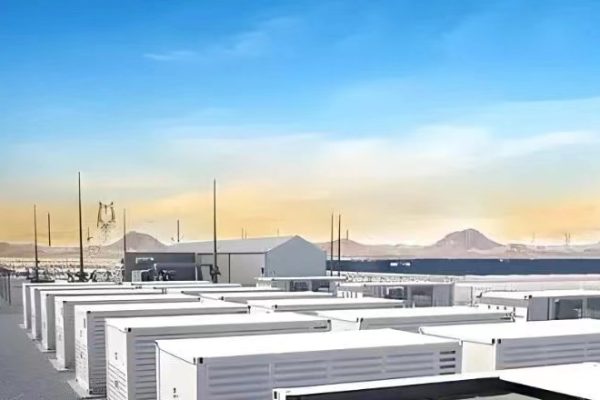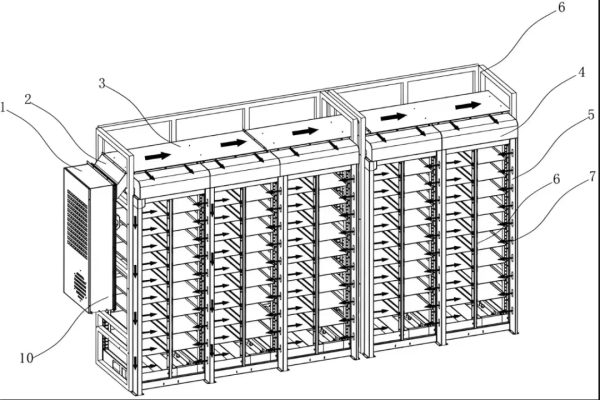Remote industrial sites, rural communities, and critical infrastructure often operate in areas without reliable grid access. Deploying a remote off-grid microgrid is an effective solution for providing continuous power while integrating renewable energy sources and storage systems.
However, designing and implementing these systems involves unique technical, environmental, and operational challenges. This article outlines key challenges, practical solutions, and a replicable case study, highlighting modular, reliable design strategies that ensure long-term operational success.
1. Key Challenges in Remote Microgrid Design
a) Power Reliability in Extreme Environments
- Remote sites often face temperature extremes, humidity, or dust, which impact batteries, inverters, and PV panels.
- Grid outages are common; system must maintain uptime under all conditions.
b) Limited Access for Maintenance
- Remote locations may be days away from service centers.
- Maintenance interventions must be minimized and modules easily replaceable.
c) Variable Renewable Generation
- PV or wind output is intermittent.
- Energy storage must be properly sized to buffer fluctuations while meeting load demands.
d) Load Diversity
- Sites may include industrial machinery, lighting, HVAC, or critical monitoring equipment.
- Each load type has different power quality and peak demand requirements.
e) Communication and Monitoring Constraints
- Cellular or internet connectivity may be unreliable.
- Local EMS must operate autonomously, with remote monitoring as optional enhancement.
2. Technical Solutions and Design Strategies
a) Modular Energy Storage Deployment
- Modular batteries allow incremental expansion and simplify on-site maintenance.
- Stackable LiFePO₄ modules or containerized storage enable hot-swap replacement.
- Modules include local BMS reporting to central EMS for real-time monitoring.
Practical Insight:
A 200 kWh modular battery system at a remote industrial camp was designed with 50 × 4 kWh modules, allowing maintenance of one module without system downtime.
b) Hybrid Power Generation
- Combine PV, wind (if available), and backup diesel generators to ensure reliability.
- EMS orchestrates energy flows, prioritizing renewables while maintaining battery SOC.
- Load shedding strategies are integrated for non-critical loads during prolonged low generation.
Technical Highlight:
A rural hospital microgrid integrated 100 kW PV + 50 kW diesel + 100 kWh storage, with EMS managing dynamic load shifting to maintain critical systems even during multi-day low solar periods.
c) Load Management and EMS Integration
- EMS provides forecast-based scheduling, predicting energy availability and peak loads.
- Implements peak shaving, demand response, and load prioritization.
- Local autonomy ensures the microgrid remains operational even without remote connectivity.
Case Example:
In a remote mining outpost, EMS-controlled microgrid reduced diesel consumption by 25% using predictive battery dispatch and automated load curtailment during high-demand periods.
d) Environmental and Thermal Considerations
- Batteries and electronics housed in climate-controlled enclosures.
- Ventilation, insulation, and thermal sensors protect against extreme heat, cold, and dust ingress.
- Passive cooling can supplement active air or liquid cooling in remote deployments to reduce maintenance.
Lesson Learned:
In a desert microgrid, modular enclosures with reflective coatings and forced ventilation maintained internal temperatures below 40°C, improving battery longevity and reducing downtime.
3. Communication and Remote Monitoring
- Use local EMS control as the primary system driver.
- Optional satellite or cellular telemetry for remote monitoring and performance logging.
- Redundant communication ensures alerts for faults or abnormal behavior even when remote connection is intermittent.
Practical Insight:
A remote telecommunications tower deployment used edge EMS logic with periodic cloud synchronization, allowing real-time fault detection without relying on continuous network access.
4. Real-World Case Study: Remote Off-Grid Microgrid
Project Overview:
- Location: Remote Southeast Asian mining camp
- System Size: 150 kW PV + 200 kWh modular storage + 50 kW diesel generator
- Objective: Provide continuous power for mining operations and housing
Implementation Highlights:
- Modular battery design allowed incremental expansion from 100 kWh to 200 kWh as operations grew.
- EMS controlled PV dispatch, battery usage, and diesel generator start/stop, optimizing fuel efficiency.
- Enclosures included ventilated cabinets with temperature sensors.
- Remote monitoring via intermittent cellular connection, with autonomous local control as primary layer.
Results:
- Diesel fuel reduction: 30%
- System uptime: 99.3%
- Hot-swap replacement allowed rapid maintenance without downtime
- Modular expansion achieved without redesigning EMS or infrastructure
Key Lesson:
Combining modular storage, hybrid generation, and predictive EMS control provides a scalable and reliable solution for remote microgrid deployments.
5. Best Practices for Remote Off-Grid Microgrids
| Aspect | Recommendation |
|---|---|
| Storage | Modular, stackable, hot-swap capable |
| EMS | Autonomous local control with predictive algorithms |
| Renewable Integration | PV/wind + storage, with diesel backup |
| Thermal Management | Climate-controlled enclosures, ventilation, and thermal monitoring |
| Maintenance | Minimize intervention with modular and plug-and-play components |
| Communication | Redundant telemetry, edge processing for autonomous operation |
6. Future Trends
- AI-driven predictive maintenance to further reduce remote interventions
- Digital twin microgrids for real-time simulation and optimization
- Hybrid microgrids with EV and small-scale CHP integration
- Edge-to-cloud EMS architectures for scalable deployments across multiple remote sites
Designing remote off-grid microgrids requires balancing reliability, modularity, and operational flexibility. By implementing modular storage, hybrid generation, robust EMS control, and thermal/environmental protection, operators can achieve:
- High uptime and operational reliability
- Scalable and maintainable modular designs
- Reduced fuel costs and optimized renewable energy utilization
These principles create a replicable framework for deploying resilient microgrids in remote industrial, rural, and critical infrastructure applications.









